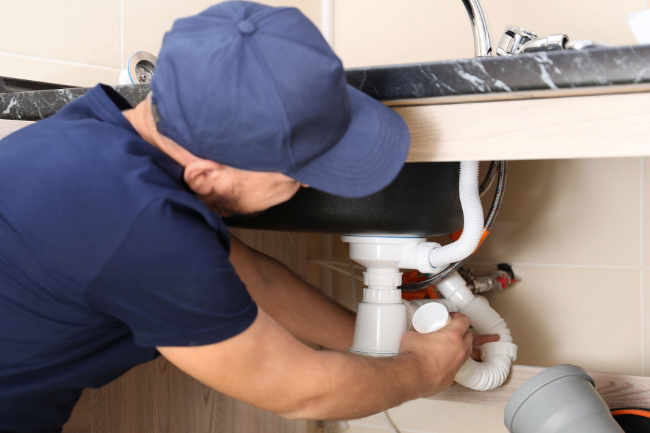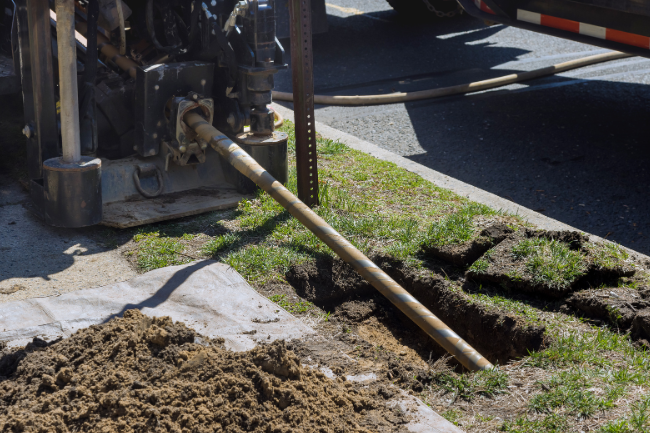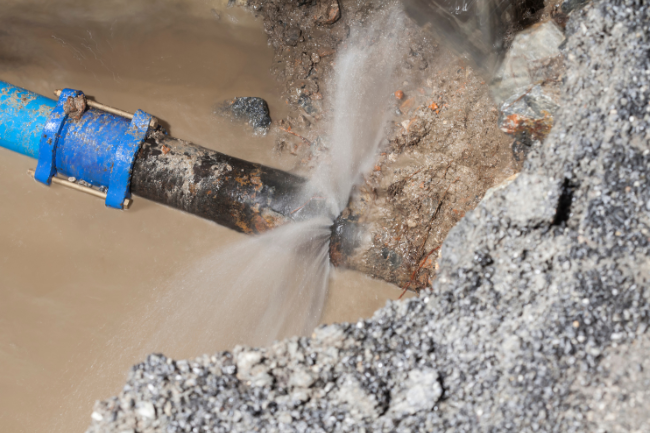What Causes Orangeburg Pipe Damage
Posted by William Heinselman on
 Orangeburg pipe lines, the main pipe system in almost all homes built from 1945 to 1972, is known for its structural issues over time, despite its widespread installation. Homeowners who do not inspect and measure deterioration of their Orangeburg systems may be faced with large-scale replacements and severe damage in time.
Orangeburg pipe lines, the main pipe system in almost all homes built from 1945 to 1972, is known for its structural issues over time, despite its widespread installation. Homeowners who do not inspect and measure deterioration of their Orangeburg systems may be faced with large-scale replacements and severe damage in time.
It is important for homeowners to keep informed on the quality and performance of their pipe system, as preventative measures and trenchless repair solutions exist as cost-effective and seamless alternatives to digging. To accurately assess the damage of your Orangeburg pipe, it is important for you to know both where the damages exist in your system, as well as why they occur where they do.
Early Indication
The standard, preferred pipe line option until the 1970s, Orangeburg pipe lines are reported to have a life expectancy of 50 years in ideal conditions. Despite this estimate, however, most systems begin to deteriorate within 30 years, and some even sooner. What does this mean for homeowners? That Orangeburg pipe systems in older homes are long overdue for a change.
Homeowners of properties with Orangeburg pipe lines may begin to notice poor pipe flow, decreasing efficiency and other service changes over time. This gradual decline in quality, often overlooked, can develop into larger, more expensive and severe pipe collapses. By knowing common signs and indicators of deterioration, homeowners can detect pipe damage earlier and avoid major, costly renovations.
Common signs of Orangeburg pipe deterioration include:
- Frequent or persistent blockages
- Decreased flows and water pressure
- Indentations and dampness on lawns
- Lush grass concentrations
A professional inspection of your Orangeburg pipe lines can inform you of the damage’s extent, as well as identify specifically affected areas for a more focused and inexpensive renovation. To evaluate pipe systems, service professionals typically use video inspection technology to determine the source of performance problems; these methods are incredibly helpful in pinpointing deteriorated areas and estimating damage severity.
Having accurate evaluations at this point informs homeowners of the exact steps they must take to repair their pipe lines. After this inspection, homeowners can decide whether a full pipe replacement is required or if other, more innovative solutions are possible. Full collapses of pipe systems often call for traditional digging and pipe replacement; damages detected early on can be replaced with other, more efficient trenchless methods.
Common Causes
Homeowners assessing Orangeburg pipe damage in their homes can benefit not only from knowing where damaged areas are, but also why those areas are damaged. Simply put, knowing the causes of pipe damage on your property can help you make better-informed decisions when choosing repair and renovation options.
Orangeburg pipe line initially grew in popularity as a low-cost alternative to steel and metal lines; these savings, however, come with the price of shorter life expectancies and major structural problems. Some Orangeburg systems have been recorded to fail after merely 10 years.
The main cause of Orangeburg deterioration lies in its composition. Standard Orangeburg pipes were created with wood pulp and hot pitch, which becomes loses strength and becomes brittle with time. The pulp and pitch used in Orangeburg creation eliminated the need for adhesives to connect pipe joints sections, further weakening sections of pipe.
Hindered with these weaknesses, Orangeburg pipe is much more susceptible to environmental damage than metal and PVC pipe lines. By already having these structural flaws, any number of everyday elements can irreparably damage, deteriorate or even collapse Orangeburg pipe, including:
- Soil and ground shifting
- Root and plant infiltration
- Animal activity
- Surface pressure
As any typical environmental source can damage these weaker systems, it can be incredibly beneficial for homeowners to act preventatively and inspect their Orangeburg systems before major damages arise. Light to moderate damages can be fully repaired using effective and efficient trenchless technologies, while larger structural failures may require digging out the damaged pipe and costly, full-scale pipe replacement.
Solutions
Trenchless technology, a method of cured-in-place pipe lining (CIPP), can effectively repair moderate pipe deterioration and damages using a fiberglass and resin Perma-liner (which molds into PVC), epoxy coating and air pressure. Today, trenchless pipe lining has become a preferred method for renovating Orangeburg pipe systems, primarily due to its seamless application and incredible efficiency.
The process is simple: A Perma-liner solution is run through damaged, targeted pipe lines, and then pressed along the existing pipe walls using an air pressure bladder. This controlled pressure forces the liner into pipe cracks, fissures and breakages, and creates virtually flawless inner walls. Ideal for Orangeburg pipe repair situations, trenchless methods can also:
- Fill entire missing segments of pipe
- Smooth pipe offsets
- Fill large cracks and seal joint connections
CIPP lining removes stress from your existing, damaged Orangeburg pipe lines and places it on the new, precisely molded PVC pipe. This vastly improves the structural integrity of your pipe system and can boost pipe life expectancy by up to 50 years. The greatest advantage of trenchless methods over other repair options, however, is its minimal effects on your property and your wallet.
Trenchless renovations do not require large-scale digging or property damage, as they are completed with existing pipe lines and often use existing pipe openings. Typically, the only digging done when using trenchless technology is for two small entry and exit holes, dug at both ends of the damaged pipe. This application, also safer and ‘greener’ than full excavation replacement, can be completed in a matter of hours, often done in a single day.
It’s because of this incredible efficiency and effectiveness that trenchless technology has been embraced by homeowners and service professionals alike for Orangeburg pipe repairs. As all cases of pipe deterioration and damage are different, it is important for homeowners to accurately assess the state of their pipe lines before choosing a repair method.
Under extreme circumstances, such as pipe collapse or major system failure, large-scale replacements and in-depth repairs may be necessary. These more severe situations can be avoided entirely when homeowners act proactively and inspect their pipe systems on a normal basis; regular inspection is especially important for homes with older Orangeburg pipe systems. The main concept here is preventability, emphasized with the strong advantages of detecting failing systems early.
To learn more about the structure and performance of Orangeburg pipe, and the trenchless methods often used to repair these pipe lines, contact us today.
Topics: Pipe Bursting






